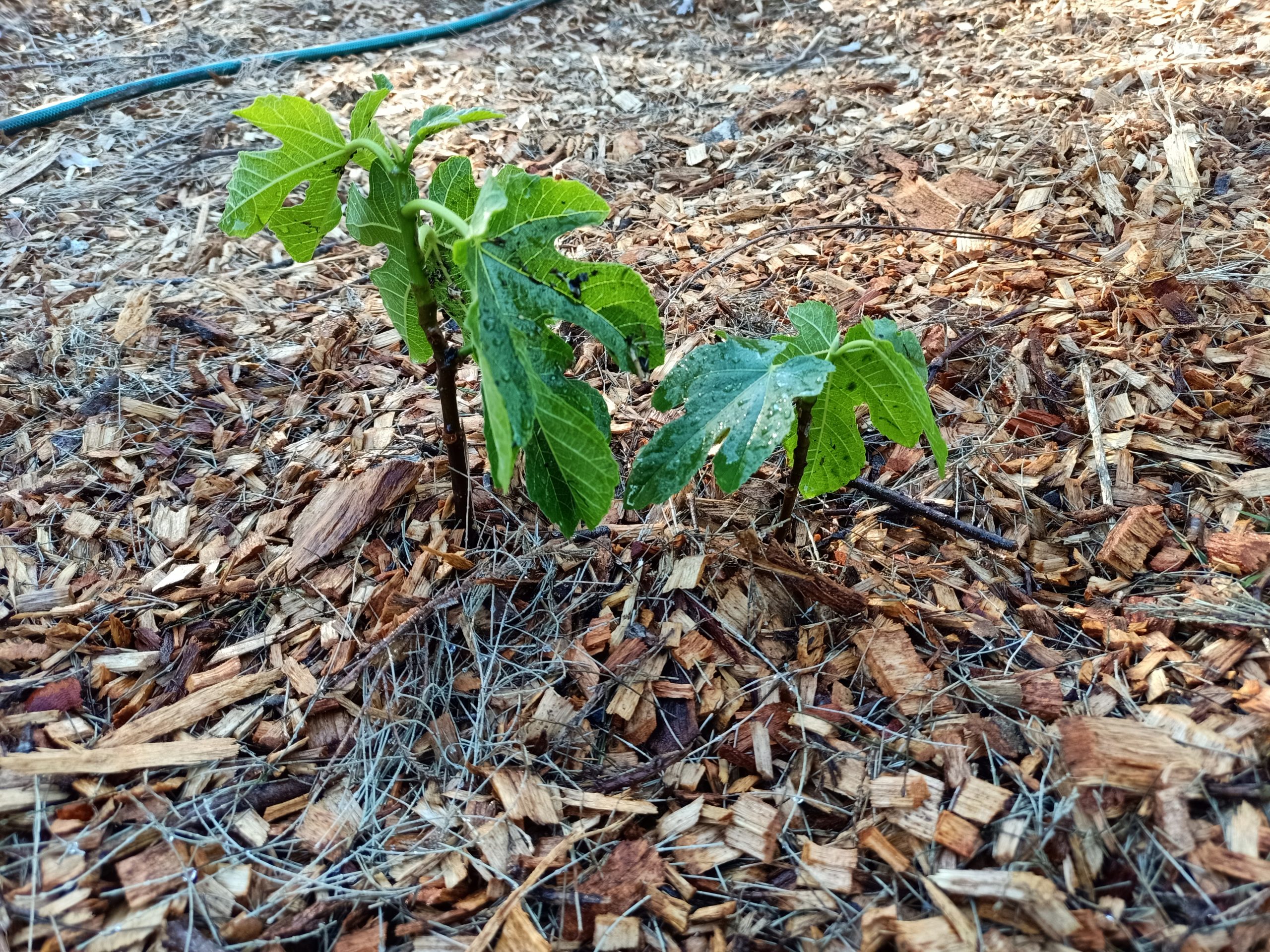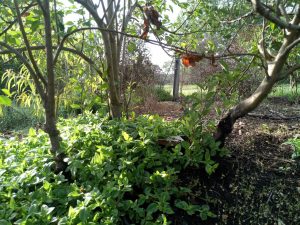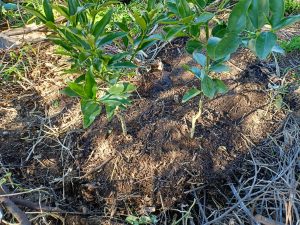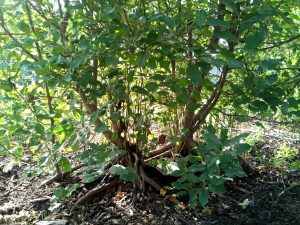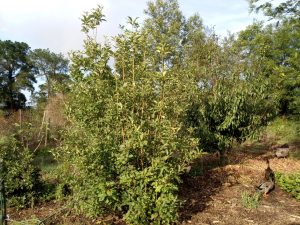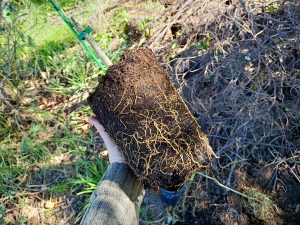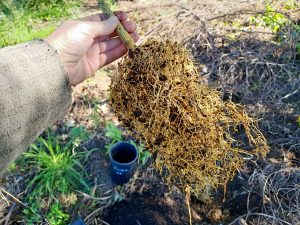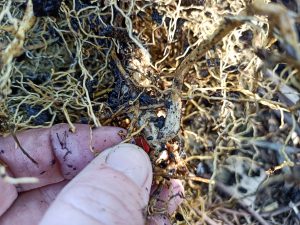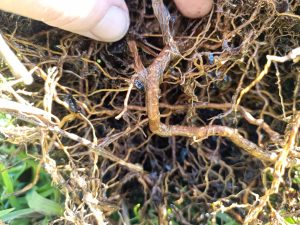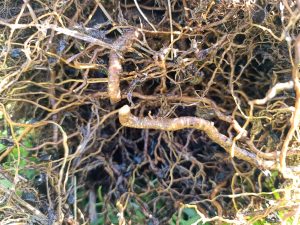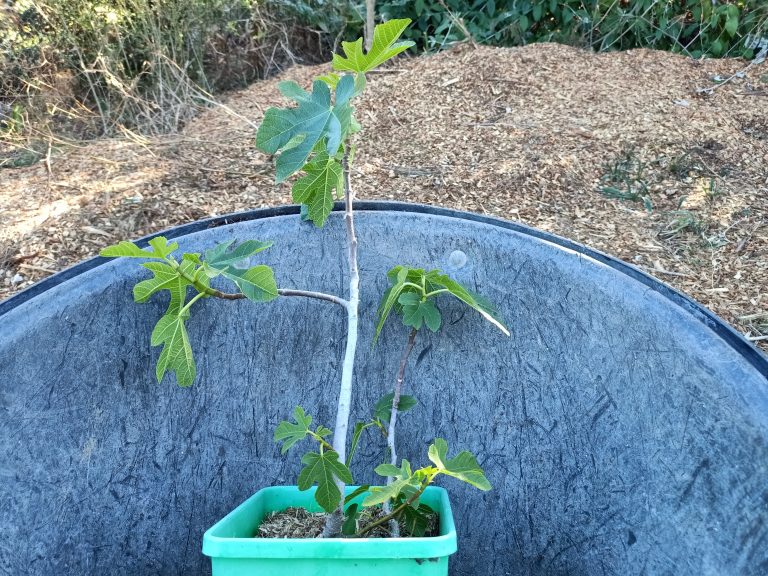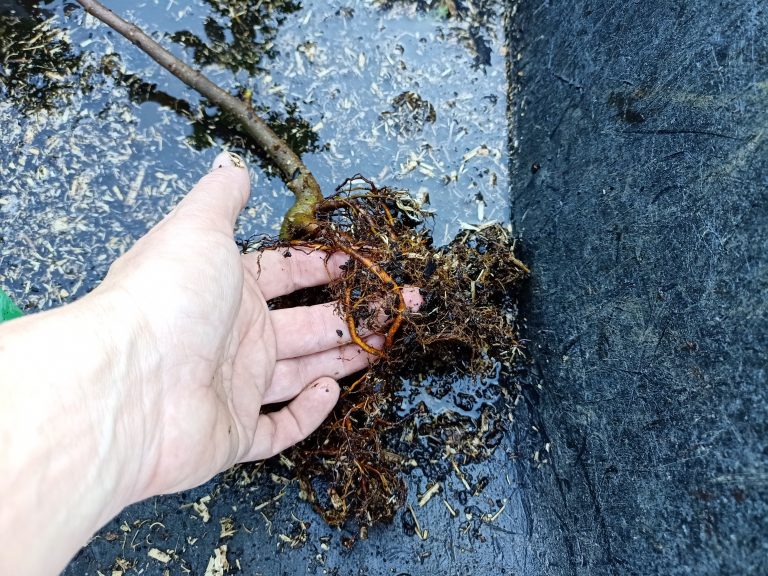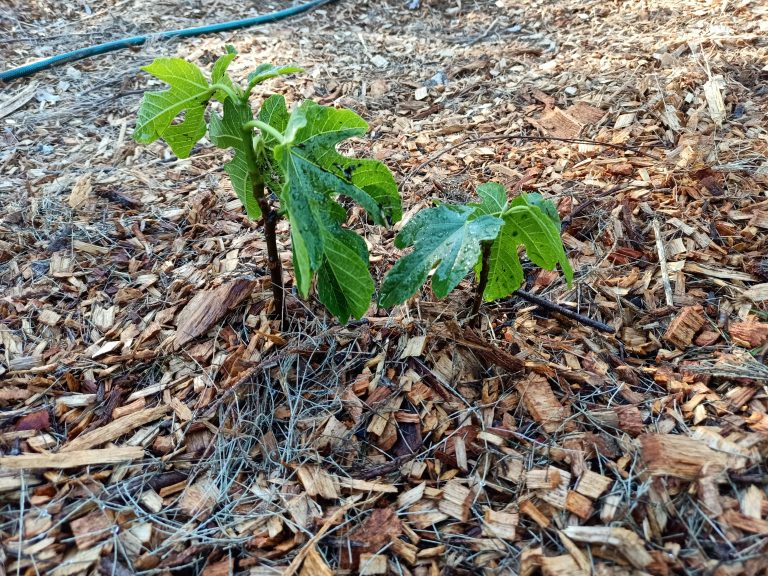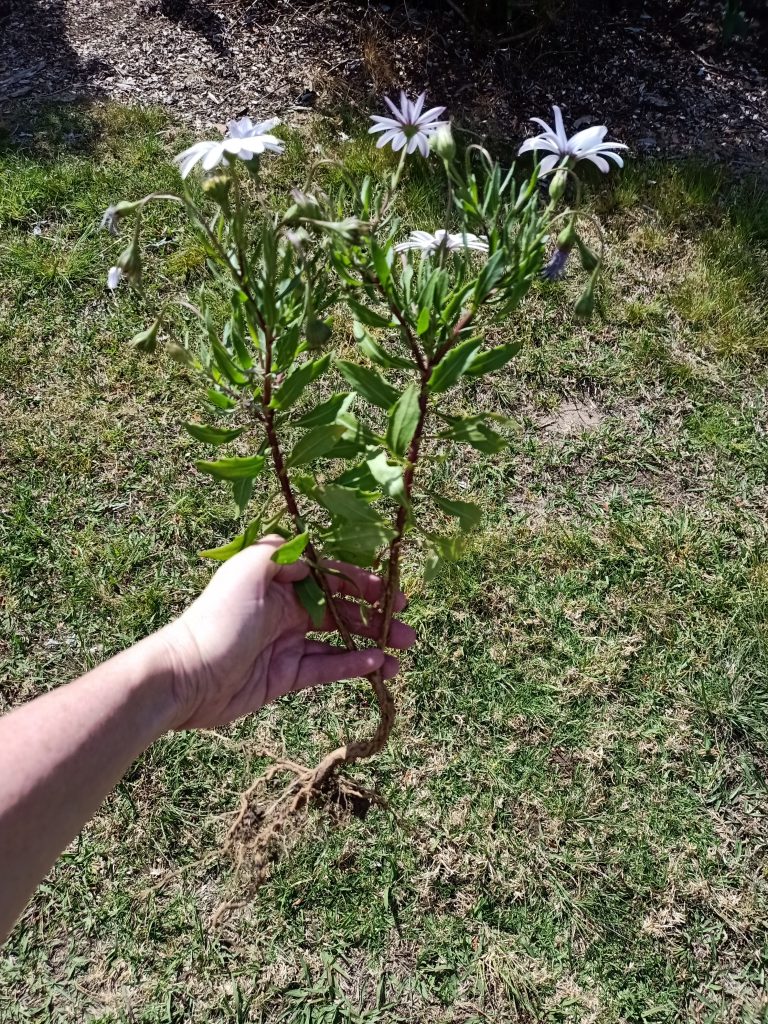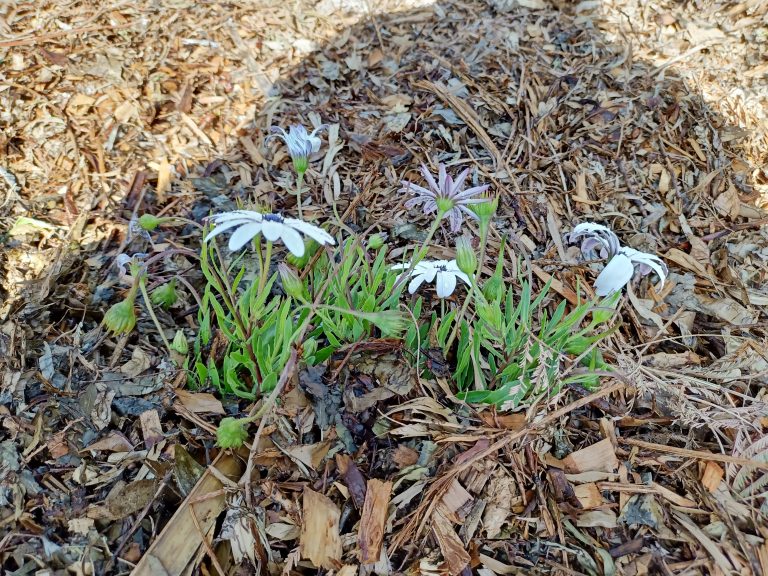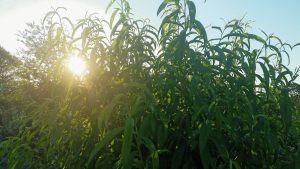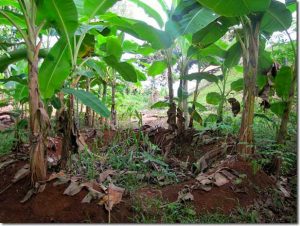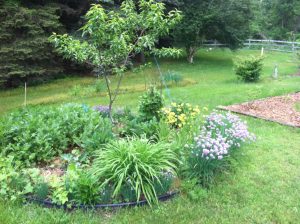I am a controversial gardener. I never go with the norm and am constantly trying new ideas. Bury the entire tree until just the top leaves are showing? Check! Three fruit trees in one hole? Check! Planting in the shade? Check! Remove all the soil from the root ball? Check! Never water your fruit trees? Check! I love pushing the boundaries of gardening and discovering wonderful new worlds.
I have always felt that gardening is one of those hobbies that everyone seems to be stuck in their old ways and very few gardeners want to think outside the box or try alternative methods. You know the sort of conversations:
“Why do you always plant your potatoes by the light of a full moon?”
“Because that’s how my dad did it, and his dad before him, and his dad before that – and they ALWAYS had the best potato crop in the area! You too should plant your potatoes by the light of a full moon”….
Maybe a little whimsical but I think you get what I mean.
While there isn’t any science supporting most of the things that I do in my garden, I am having a boat-load of fun having a go and learning what works and what doesn’t!
In the last few weeks I have planted out several young fruit trees. Let me tell you what I have been doing that completely goes against popular advice.
“GIVE YOUR FRUIT TREES PLENTY OF SPACE”
I plant up to 3 fruit trees all in the one planting hole.
The person who thought of this method (Dave Wilson) says you can do up to 5 trees in the one hole. It is called “Backyard Orchard Culture” and is particularly good for very small yards. The benefits of this planting technique are:
- Get maximum plants into a small area
- Prolong the harvest (due to fitting in more plant varieties)
- Cross pollination (plants are close together and pollination is increased)
- Natural dwarfing (due to competition between the densely planted trees)
So far I have planted:
- 3 grafted apple trees in one hole
- 2 seedling apple trees in one hole
- 2 citrus in one hole
- 2 figs in one hole
The apples have been in the ground for years. The citrus have only been in the ground for about 3 months and the figs were planted a week ago. All are growing extremely well. I also know of a nursery in Sydney who promotes this method of planting and has two mature citrus trees planted this way.
If this interests you, find more information here:
https://www.davewilson.com/home-garden/backyard-orchard-culture/
“GIVE YOUR FRUIT TREES PLENTY OF SUN”
I plant in the shade sometimes.
Sunlight promotes the ripening of fruit. In commercial growing situations, this is advantageous as the fruit can be harvested all at once if the entire tree is flooded with sunlight. In a backyard situation we actually don’t want all our fruit ripening at once (unless maybe you are preserving). It is better to allow the fruit to ripen gradually so we don’t end up with a glut which is more than we can cope with and then nothing for the rest of the season. In our hot Australian climate we can often get away with a little more shading and still get a bumper crop.
I particularly like to plant young fruit trees in the shade of wattle trees. Fruit trees coming straight from the nursery have often had optimal conditions (greenhouse, fertilizer, watering, etc) and it can be a shock to plant them out straight into our garden in full sun. I use my black wattle trees as “nurse trees” and the little fruit tree gets dappled shade for several weeks where it can “harden off” while in the ground. As the fruit tree grows I will remove branches off the wattle to give the fruit tree more sun.

“RETAIN THE SOIL FROM THE POT AROUND THE ROOT BALL”
I now bare-root all my fruit trees before planting.
I have been surprised to discover that several fruit trees that I have removed all the soil from the root ball have had deformities that may have become a girdling root and strangled my fruit tree in later years. This appeared to be because the tree had been potted on way too late while at the nursery and the root had hit the bottom of the pot and doubled back on itself. Had I just planted these trees and not discovered the problem I may very well have lost the plant after several years and been left wondering what had suddenly gone wrong.
Now I remove all of the soil from the tree. I gently dunk it up and down in a bucket of water until I can get a good look at the root system. You then think of the root system similar to how you would think when pruning the branches of a tree. Remove any roots that seem rotten, diseased or defective. In particular I often see roots which have a sharp bend and are growing upwards or turning inwards toward the center of the root mass. What would you do if you found a tree branch behaving this way? You would prune it off just before the bend. Do the same to the deformed root and you will stimulate new healthy roots to grow.
I have also received extra surprises when bare-rooting my trees. The fig tree in the photo (above left) I expected to be two branches growing from the one root system under the mulch. It actually turned out to be two separate plants in the one pot. I would have not realized this had I planted the fig tree(s) with all the soil from the pot intact.
The root shown in the photo above right comes from the largest of these two fig trees and had turned completely upwards. It most likely would have caused girdling issues later down the track.
This technique to bare-root all trees before planting is promoted by the famous horticulturist, arborist and garden myth-buster, Linda Chalker-Scott. You can find her planting method at:
https://gardenprofessors.com/twelve-step-program-for-planting/
“PLANT AT THE SAME DEPTH AS IT WAS IN THE POT”
Believe it or not, I sometimes plant WAY deeper!
Now I am going to throw something into the mix that will get your head spinning. Ever heard of “long- stem planting”? What if I told you that I have started experimenting with burying the trunks of my fruit trees so that just a few leaves at the top are sticking out of the ground? Sounds crazy, right? Well, maybe not… Stay with me…
Long-stem planting has been used with great success in bush regeneration. The deep planting protects the roots from changes in soil temperature and allows the plant access to deeper soil moisture. Once planted, the seedling develops roots from the buried stem which promotes the development of a robust root network.
Everyone knows that if you plant a fruit tree too deeply it could get collar rot and die. However, long-stem planting challenges this horticultural belief. It is still unclear why, but the bush regeneration plants that have been buried very deeply did not have an issue with collar rot.
It is suggested that plants which propagate easily from cuttings respond well to the long-stem planting technique. I have recently planted two small fig trees and so far they are looking good but a little more time is needed to form an opinion.
I am eager to test this method on grafted fruit trees. My theory is that I won’t have any of the usual issues that gardeners face from suckers growing from beneath the graft as the rootstock will be completely buried. I should also get adventurous roots forming from the trunk of the main plant giving me a large root system which will draw more nutrients and water for the tree – increasing crop yield and quality. I will be sure to write an article on this exciting experiment after testing begins!
Note that the long-stem planting method is not recommended if you have clay soils as the planting hole will hold water and drown your fruit tree. Only use on well drained soils. If you have clay soils I recommend you hill up and plant onto a mound, especially for the plants that do not cope with water-logging.
You can download a copy of the long-stem planting guide from the link below:
While the plant below is an African Daisy and not a fruit tree it is an example of another plant for which I have use the Long-stem planting technique.
“GIVE YOUR FRUIT TREES PLENTY OF WATER”
Um, I don’t water my fruit trees…
I am on tank water and my planted area seems to get bigger and bigger every year. If I was to try to keep up with the watering of all my fruit trees then we would never have enough water left for drinking or having a shower! On my property, my fruit trees either develop deep root systems to find their own water or they die. This technique was named by a fellow called Mark Shepard and is known as “STUN” (Sheer Total Utter Neglect). Yes, it actually is called that!
Often when people water their fruit trees the water tends to remain close to the surface and therefore the roots stay where the water is and the tree develops a shallow root system. You can water at deeper soil levels by using deep pipe irrigation (burying a vertical pipe beside the tree and watering down this pipe) but I choose not to water my fruit trees and the tree is encouraged to grow a deep root in search of water. I can always add deep pipe irrigation later if I find that fruit quality is suffering.
Interestingly, I have lost very few trees and the ones that have survived have such a good root system that even during our recent drought I never watered my fruit trees and I didn’t lose any at all. I currently have around 45 fruit trees and have lost about 5 trees over the years.
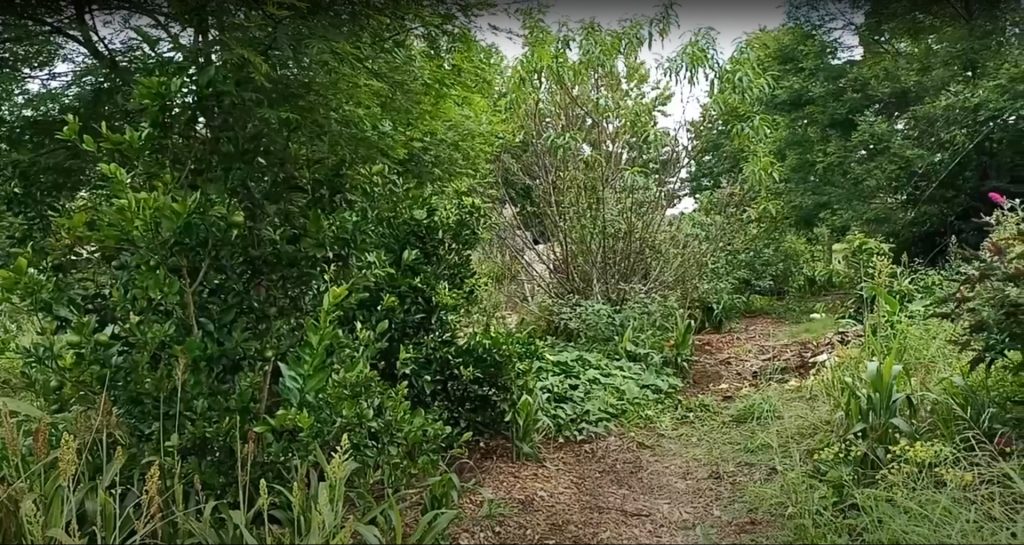
I have found that trees that are left alone are slower to grow than fruit trees which have been fertilized, watered and “babied” (to be expected), but I believe that this is because while I am seeing not much growth ABOVE ground there is a lot of growth happening BELOW ground as the trees are developing deep and strong root systems. I do mulch around my trees with woodchip so that there is a good supply of organic matter promoting healthy soil biota.
I do not plant during the driest times of the year – there is no point stacking the odds against success! When I first plant my fruit trees I will water them in initially but after that I will not water them again.
I love being surprised by new and unconventional gardening techniques, but how do we know what will work unless we try! Sometimes those experiments that we expect to succeed will fail, and those we expect to fail will actually succeed!
I am not trying to tell you that the methods in this article are the way you should plant your trees – you must always garden in a way that works best for you and your circumstances. I do, however, encourage you, if nothing else, to break free from traditions. Be adventurous! Try new things! Trust your instincts! And the world of plants will become a much more exciting place…
Now run outside and create your oasis!
Jo

